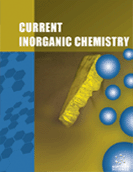Abstract
Background: Sandwich-type polyoxometalates (POMs) of the Dawson family result from the reaction of the lacunary species [X2W15O56]12- (where X = As or P) with M, a "d" or "f" transition metal, yielding the compound [M4(H2O)2(X2W15O56)2]y- in which the metallic cluster M4O14(H2O)2 is sandwiched between two lacunary fragments [X2W15O56]12-. We have made significant progress as far as the determination of the X-ray diffraction structures and the electrochemical and electro-catalytic characterisations of these compounds are concerned. The presence of the metallic cluster M4O14(H2O)2 (with M = MnII, FeIII, CoIII, NiII, CuII, ZnII or CdII), imparts interesting properties to these complexes for potential applications in the domains of catalysis, electrocatalysis, magnetism and materials science.
Objectives: The main purpose of this study was to propose a reliable synthesis method of sandwichtype, Dawson POMs containing "d" metal centres of different natures (CuII/FeIII) and to describe and understand their redox behaviours and electro-catalytic properties.
Methods: Four POM molecules based on mixed copper(II)-iron(III) tetra-nuclear clusters [Fe2Cu2O14(OH2)2)] and the Dawson fragments [X2W15O56]12- (with X = As or P) have been prepared. These compounds have been characterised by several techniques (elemental analysis, UV-Visible and IR spectroscopies, cyclic voltammetry, electrochemical quartz crystal microbalance (EQCM), thermal gravimetric analysis …). They were found to be iso-structural of previous sandwich-type species described in the literature, though single crystal X-ray diffraction turned out to be incapable of making the difference between the [(CuOH2)2Fe2(X2W15O56)2]14- species with the CuII centres in external sites from the [(FeOH2)2Cu2(X2W15O56)2]14- species with the CuII centres in internal sites.
Results: The electrochemical behaviour of these four compounds in solution turns out to be almost identical and no obvious differences seem to arise from changes in the relative positions occupied by the CuII and the FeIII centres. Cyclic voltammetry coupled to the quartz crystal microbalance revealed that the reduction of the FeIII centres always precedes that of the CuII centres, irrespective of their relative positions in the POM structure. Also, by comparison with their related compounds, [(NaOH2)2Fe2(X2W15O56)2]16- and [(FeOH2)2Fe2(X2W15O56)2]12-, the presence of copper markedly improves the electro-catalytic efficiency of these species towards the reduction of nitrogen oxides and dioxygen. The efficiency of these two processes decreases upon increasing the pH, but remains observable up to pH 5. Surprisingly, during the electro-catalytic reduction of nitrite, the formation of a deposit of Cu0 on the working electrode surface is not detected by EQCM. This is a crucial observation, since it is the first time that a real synergy between the FeIII and the CuII centres towards the electro-catalytic reduction of NO2 - has been demonstrated without the formation of Cu0.
Conclusion: Our results reveal that the combination of CuII and FeIII centres in the same POM remarkably improves its electro-catalytic efficiency towards the reduction of dioxygen and nitrogen oxides such as the nitrite ion and nitric oxide.
Keywords: Polyoxometalates, iron-Copper cluster, electrochemistry, EQCM, electro-catalysis, quartz-crystal.
 53
53 2
2 2
2 1
1


